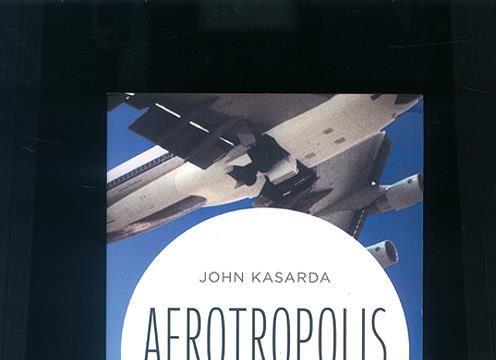A few years ago, on an Outlook Traveller assignment, I was bewildered and awed by Kazakhstan’s new capital-in-progress, Astana, a bizarre, grand, SimCity-like, Dubai-dwarfing project of giant buildings, wide boulevards, dubious monuments and megalithic aquariums. I thought it was Babylon returned after millennia, but it’s only part of a global movement, a future aerotropolis, a new breed of airport-centric cities that are springing up across the globe.
In Aerotropolis, authors Kasarda (who coined the term) and Lindsay chart the growth of the air-connected megapolis and build a map of the global city of tomorrow. The idea of the new-age business city is something we’re seeing everywhere in India — the proliferation of malls, newly developed housing and office districts for corporate frequent-flyers, multiplexes and restaurants has been our country’s story for the last decade, a source of pride as well as horror. Bangalore and New Delhi are mentioned frequently in this book — mostly as afterthoughts following lists of Chinese and Korean cities — as examples of the new forces striving for space in the fast, frictionless, wi-fi-enabled global economy.
The growth of cities has always depended on cutting-edge transport possibilities of the time — trade routes via roads, ports, great railroad cities, and then airport-supported transcontinental business centres. A lot of today’s biggest cities have been airport-led for years, so why is the aerotropolis idea new in any way? It’s because the idea is not just one of an airport as an engine of progress, but a planned city with the airport as its actual centre, a hub around which the whole city is built from scratch. Starting with the example of Korea’s Songdo, to be completed in 2015, the authors expand on the notion with plenty of urban planning-guru theory (Kasarda) and anecdotes and interviews from across the world (Lindsay). There’s a forward-looking, frontier-shifting enthusiasm that runs through the book, as it speaks of the hundreds of aerotropoli that will mushroom one day in China. These clean, green, efficient, transport-oriented new hubs of commerce that will possibly turn today’s New Yorks into relics like the city I was born in, Kolkata. There is no greater proof of the irrelevance of this once-upon-a-time cosmopolitan hub in the global scheme of things than its shabby, struggling airport.
Despite all the authors’ energy, it’s quite hard to imagine that the world’s great cities, no matter how overcrowded and clunky, will ever be usurped by these new business centres and their accompanying ‘relovilles’— uniform, anonymous housing complexes where business people live for a few months while on assignments; where “homes… office parks and even cities become disposable”. But then, the world is dotted with the ruins of glorious cities that thought they would stand forever.
Aerotropolis is an excellent work of pop economics and an insightful look into the way goods and people whiz across the globe to bring us all the things we take for granted in our homes, wherever those are. I would never want to live in one, but that’s irrelevant.




